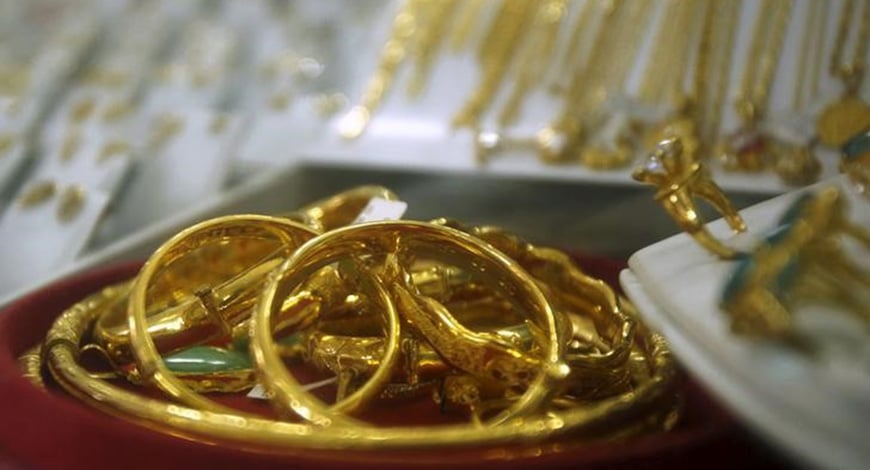- Economy
- Education And Career
- Companies & Markets
- Gadgets & Technology
- After Hours
- Healthcare
- Banking & Finance
- Entrepreneurship
- Energy & Infra
- Case Study
- Video
- More
- Sustainability
- Web Exclusive
- Opinion
- Luxury
- Legal
- Property Review
- Cloud
- Blockchain
- Workplace
- Collaboration
- Developer
- Digital India
- Infrastructure
- Work Life Balance
- Test category by sumit
- Sports
- National
- World
- Entertainment
- Lifestyle
- Science
- Health
- Tech
.jpg)
Stephen Rego
He has been a journalist since the mid-1980s, and has spent close to two decades tracking the gem and jewellery industry while holding different editorial positions in industry specific publications and websites
More From The Author >>Jewellers' Strike | One Step Forward?
The constitution of an official sub-committee to study the issue of the 1% excise duty on jewellery will hopefully lead to a healthy and informed discussion on the unique structure of the industry, the nature of its product and the need for a sector-specific framework while implementing general taxes
Photo Credit : Reuters

Many of the more widely known organisations involved in the jewellers’ agitation against the 1 per cent excise duty levied in the Budget called off their strike on Saturday March 19 after an informal agreement was reportedly reached with representatives of the government.
The two key aspects of the settlement were reported to be constitution of an official committee, which will include representatives of the trade, to study the issue, and clear instructions that there were to be no “visits” to jewellers by Central Excise officials, “no arrest or criminal prosecution” and “no search or seizure of stocks” in the interim.
However, many local associations refused to accept these terms and are continuing with their protests in various parts of the country. Though not as all-encompassing as the earlier strike was, they have kept the discussion on the levy alive.
On Sunday, two bodies, Confederation of All India Traders (CAIT) and All India Bullion Jewellers and Swarnkar Federation (AIBJSF) argued that most jewellery traders are sellers and not manufacturers, and so do not fall within the ambit of excise. Moreover, they pointed out, there was no clear definition of ‘principal manufacturer’ which the government says is the entity that will be liable to pay the levy.
In a separate development, Finance Minister Arun Jaitley averred that “luxury items cannot go on being untaxed”. He said that a committee on GST headed by CEA Arvind Subramanian had clearly recommended a levy on gold, as “other products cannot subsidise gold”.
The minister however clarified that he supported the other concerns of the industry – that there should be no harassment and that no job worker or small trader should be liable for excise.
Last week, a government release announced the formation of a committee to be headed by Ashok Lahiri, a former economic adviser to the government. It will have three trade representatives, a legal expert and officials from the Ministry of Commerce and Central Excise. The body will be constituted shortly and will submit its report within 60 days. All associations will be given an opportunity to submit representation before the Sub-Committee in writing and the all India associations to state their case in person.
For nearly a decade now, the debate around the proposed implementation of an excise duty on jewellery has been carried out in fairly black and white terms. One side of the discussion has characterised the industry as one that trades largely in cash, avoids taxes and in general is against the development of a more organised business structure. The opposite viewpoint has stressed rampant corruption in the government machinery, particularly at the lower levels, and argued against excise saying it will open the door to harassment on the one hand, and actually encourage those who indulge in illegal practices on the other.
Clearly, the truth lies somewhere in between. The Lahiri Committee is ideally placed to explore this middle ground.
Some of the key issues that it will have to address are the unique structure of the industry, the nature of its product and the need for a sector-specific framework while implementing general taxes, among others.
As we have pointed out earlier, the Indian jewellery industry encompasses a very wide range of business entities. There are the large manufacturers who cater to the export sector, with a few also having branded retail businesses within the country, and others who are non-branded suppliers to large domestic jewellery chains. There are pure retailers, both big and small, who purchase from large manufacturers and many retailers who have dedicated job-workers to carry out their manufacturing activities, a system of tied-in outsourcing, and so on.
Valuation of the product is also a challenge since gold prices change every day, and assessment of diamonds and precious stones can only be carried out by experts. It becomes extremely complex when officials unfamiliar with these aspects are tasked with verifying excise duty payments.
Moreover the stock in trade has an immensely high value compared to most other retail businesses; any disputes that leads to seizures can translated into massive losses.
The government seems clear that it will not withdraw the excise duty and says it should be seen as a precursor to the proposed GST regime. While industry leaders and their teams need to come up with practical suggestions that will enable tax compliance in a transparent and easily verifiable manner, the government needs to develop officials with the necessary expertise to balance between the concerns of the industry and larger economic goals.
The stage is set for a fruitful discussion, and possibly the creation of a road map that will enable the industry to flourish and contribute to growth in employment and government revenue in the process.
